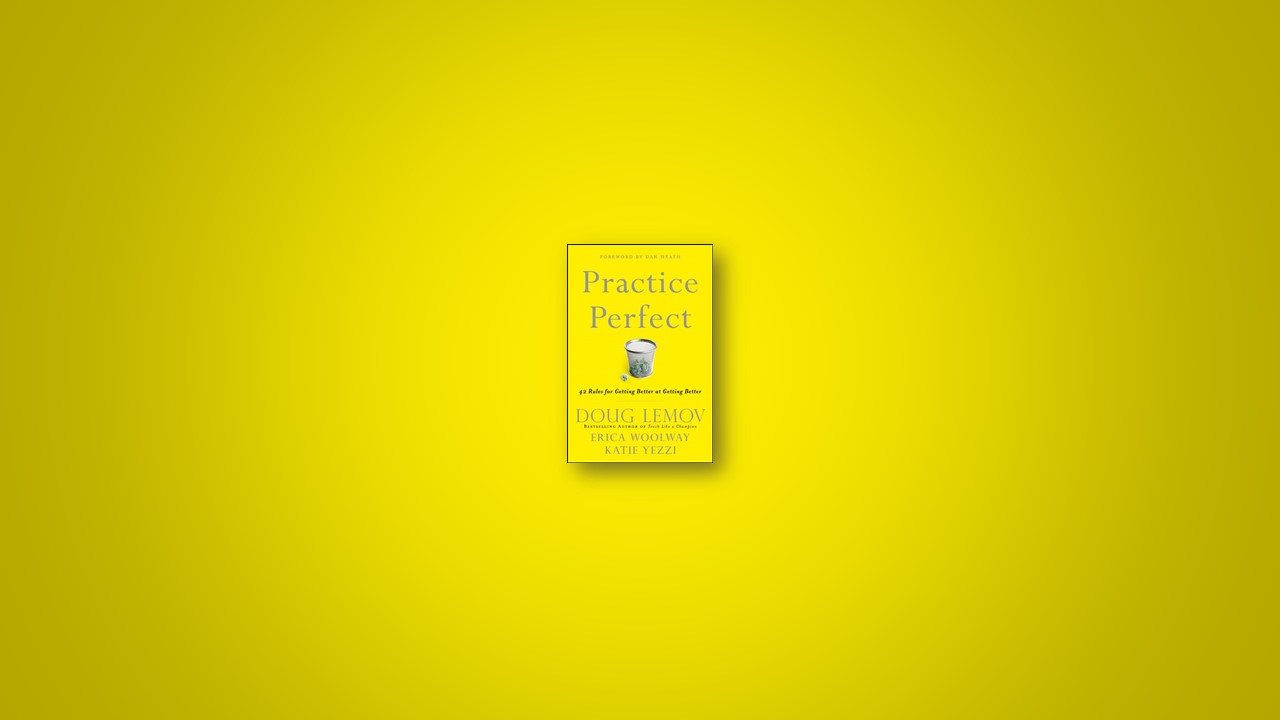Rule 1 Encode Success
Engineer practice activities so that the success rate is reliably high; if the activities are especially challenging, ensure that they end with a period of reliable success so your participants practice getting it right.
Check for mastery constantly. If activities don’t result in reliable success, simplify temporarily so that participants start successful; then add complexity.
Focus participants on the “fastest possible correct version” or the “most complex right version possible” for any activity.
Rule 2 Practice the 20
Identify the 20 percent of things you could practice that will deliver 80 percent of the value.
Practice the highest-priority things more than everything else combined.
Keep practicing them: the value of practice begins at mastery!
Save time by planning better in advance.
Engage participants by repeating productive drills with minor variations instead of constantly introducing new ones.
Rule 3 Let the Mind Follow the Body
Stress learning skills all the way to automaticity so that participants can use them automatically—and before they consciously decide to.
Build up layers of related automated skills so that participants can do complex tasks without actively thinking about them.
Automate fundamentals, but also look for more complex and subtle skills that may also respond to automation. It’s a false assumption that only simple things can become habits.
Rule 4 Unlock Creativity . . . with Repetition
Automate skills to free participants’ cognition to be more creative.
Look to automate skills at exactly the moments you need creativity most, to free up processing capacity.
Push participants to reflect later, after they’ve practiced enough to better understand what they are doing.
Rule 5 Replace Your Purpose (with an Objective)
Replace the vague idea of a “purpose” with a manageable and measurable objective that is made ahead of practice and gives mastery guidance.
Teach skills in a sequence of objectives of increasing complexity.
Include objectives that focus on integrating previously mastered skills.
Adapt objectives to the rate of participants’ mastery.
Rule 6 Practice “Bright Spots”
Identify and practice areas of talent as well as areas of weakness.
Seek ways to apply established skills in new settings to leverage strengths.
Use one participant’s strengths to model for other team members and speed replication across the group.
Rule 7 Differentiate Drill from Scrimmage
Use drills to distort the game and focus intensively on development of one or several skills.
Use scrimmages to evaluate your readiness for performance.
Recognize that scrimmaging is generally less efficient as a teaching tool.
Recognize that success in scrimmage is the best indicator of true mastery—participants can perform a skill when the time and place of its application is unpredictable.
Consider using a sequence of drills that integrate new skills with previously mastered skills before—or in lieu of—scrimmage.
Rule 8 Correct Instead of Critique
Strive to ask participants to redo an action differently or better rather than just telling them whether or how it could have been different.
Try to shorten the feedback loop and achieve correction as quickly as possible after an action that requires intervention.
Always maintain a teaching mentality and focus on the solution (“cut more sharply to the basket”) rather than the problem (“your cut wasn’t sharp”).
Seek opportunities to correct privately. When you correct publicly, make it clear that it’s a common error, then make sure to correct, not critique, by asking all participants to repeat the action.
Rule 9 Analyze the Game
Use data to pick out the top performers.
Observe and analyze performance data to discern what skills top performers have in common.
Analyze and describe those skills in terms that provide a clear map to others who want to replicate them.
Rule 10 Isolate the Skill
When teaching a technique or skill, practice the skill in isolation until the learner has mastered it.
Uncover and retrain when compensatory skills are masking the need for isolated skill development.
Rule 11 Name It
Name each skill or technique you have identified as an important building block for outstanding performance.
Monitor the use of this shared vocabulary: use the names, ask staff to use them, and then ensure that the names are being used correctly.
Rule 12 Integrate the Skills
After teaching discrete skills, create practice that places the skills in situations participants could face in the game.
Create practice that helps people learn to match the right skills to the right situations.
Consider simulating the performance environment to ensure that successful practice translates to successful performance.
Rule 13 Make a Plan
Plan with data-driven objectives in mind, and plan to adapt.
Plan down to the last minute.
Rehearse and revise the plan.
Videotape and reflect on practice sessions.
Rule 14 Make Each Minute Matter
Get a whistle—real or metaphorical—to conserve the resource of time.
Identify the ways you inadvertently waste time and create remedies as soon as possible.
Turn those remedies into routines.
Rule 15 Model and Describe
Use modeling to help learners replicate, and use description to help them understand.
Using modeling and description together ensures that learners can flexibly apply what they have learned.
Rule 16 Practice Using Feedback (Not Just Getting It)
Using feedback is a different skill from accepting it. Build a culture where people get better at using feedback by doing it a lot.
Cause people to practice putting their feedback to use as quickly as possible—by sending them back to the front of the line, for example.
Observing the use of feedback right away helps managers and coaches see whether their advice works.
Rule 17 Apply First, Then Reflect
Reflection, while often worthwhile, can become a barrier to further practice. Ask people to apply feedback first, then reflect on it.
When participants apply feedback and then reflect, they have more data to use in reflecting on the value of the feedback.
Try using the phrase “Whose turn is it?” to respond to an excess of discussion when more practice would be preferable.
Rule 18 Shorten the Feedback Loop
Speed of consequence beats strength of consequence pretty much every time. Give feedback right away, even if it’s imperfect.
Remember that a simple and small change, implemented right away, can be more effective than a complex rewiring of a skill.
Rule 19 Normalize Error
Encourage people to challenge themselves and push beyond their performance plateaus by taking calculated risks in practice.
Don’t minimize or ignore errors, or they will become too ingrained and people won’t learn from them.
Help performers identify their own errors so that they can improve them independently.
Practice responding to errors in an effort to prepare for and normalize mistakes.
Rule 20 Make It Fun to Practice
Utilize friendly and positive competition (for individuals or between individuals).
While striving to make practice fun, always maintain the objective of the practice.
Encourage your players to cheer for each other in practice (not just in the game).
Incorporate elements of surprise. Keep people on their toes by asking all participants to plan and by surprising the next person to be called to practice. (It’s also a useful accountability tool!)
Rule 21 Everybody Does It
As the leader, be willing to model and engage in practice yourself.
Ask for feedback on your practice in order to model getting past nice.
Use language that is inviting and assumes everybody will practice.
Rule 22 Hire for Practice
Before hiring your team, thoughtfully consider the practice task you want potential employees to demonstrate.
When potential hires practice, use the opportunity to gauge their openness to practice and feedback.
Ask them to repeat a portion of the practice task. Evaluate their ability to actively incorporate your feedback.
Rule 23 Look for the Right Things
After isolating skills during practice, observe people during the actual performance in order to provide feedback on the discrete skills that were practiced.
Create an observation tool to use during performance that is aligned to the skills you have practiced.
Allow leaders to practice observing for discrete skills during the performance.
If you are going to evaluate a particular skill in performance, allow performers to practice the skill first.
Post-practice, ask performers to set their own discrete goals for performance, and then observe them for the skills required to achieve those goals.
Rule 24 Walk the Line (Between Support and Demand)
When the game (post-practice) has begun, be transparent about your role as evaluator.
Reward hard work and communicate a sense of urgency when improvement is necessary.
Post-practice, frame feedback not as helpful advice but as something required to improve performance.


